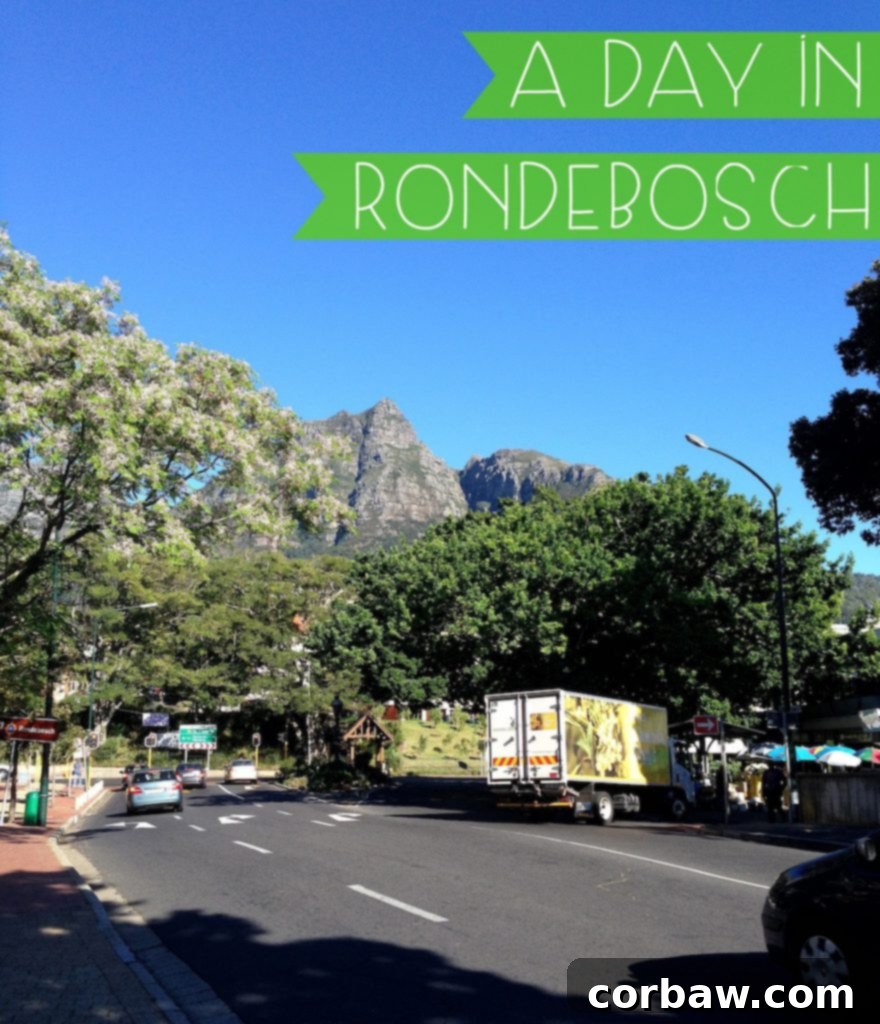Discovering Rondebosch: A Deep Dive into Daily Life in Cape Town’s Southern Suburbs

Living in the vibrant city of Cape Town has been an incredible journey, particularly our time in the charming neighborhood of Rondebosch. After almost eight months of calling this unique South African suburb home, it’s high time to share a glimpse into our daily lives here. While many visitors might focus on the breathtaking safaris or the endless parade of gorgeous beaches like Llandudno or the famous Boulders Beach with its penguins, there’s a rich, everyday experience to be found beyond the typical tourist hotspots. This article aims to pull back the curtain on what it’s truly like to live and thrive in Rondebosch, offering insights that go beyond the postcards.
Rondebosch: A Welcoming Corner of Cape Town’s Southern Suburbs
To truly understand our experience, some geographical context is essential. We reside in what locals affectionately refer to as the “Southern Suburbs” of Cape Town, an area nestled approximately a 15-minute drive south of the bustling city center. Our decision to settle in Rondebosch was a deliberate one, driven by several key factors. Primarily, its proximity to the University of Cape Town (UCT) was a huge draw, allowing for an easy walk to my fiancé’s school. Beyond academic convenience, Rondebosch is renowned for being a safe, friendly, and well-regarded neighborhood, offering a sense of community that we deeply appreciated. It’s also incredibly well-situated, offering easy access to both city amenities and natural wonders.
The visual landscape of Rondebosch is dominated by the majestic Devil’s Peak, an iconic part of the Table Mountain National Park, which frequently graces our views, as seen in the image above. Our flat is strategically located right in the heart of the neighborhood’s main commercial area. This means unparalleled convenience: our grocery store and local gym are mere steps – about 500 feet – from our front door, making daily errands refreshingly simple and accessible by foot.
Our Accommodation: Modern Living with Robust Security
Our home is situated within a substantial residential complex, a relatively new development that’s only a few years old. We discovered this gem through UCT’s housing resources, and consequently, many of our neighbors are fellow students. This creates a lively, academic atmosphere within the building, fostering a sense of camaraderie among residents. The complex itself is quite expansive, with our particular unit occupying just one corner of this impressive structure, offering a blend of modern design and functional living spaces.

One of the most striking cultural adjustments upon moving to Cape Town, and particularly to Rondebosch, was encountering the intense emphasis on home security. It was a significant culture shock for me, coming from a background where such measures were less common. Our complex serves as a prime example of this reality. Just observing the perimeter fence around our building reveals its formidable nature: not only is the top lined with sharp spikes, but it’s also reinforced with six distinct lines of electric wire, a clear deterrent to any potential intruders. Gaining entry to the building itself requires a sophisticated fingerprint scanner, a testament to the layers of protection in place.

Forgive the slight blur in the photo – I was juggling a heavy bag of groceries in my other hand! Once past the initial fingerprint scan, you enter a spacious lobby, consistently monitored by two dedicated security guards, 24 hours a day, ensuring constant vigilance. From the lobby, another security checkpoint awaits: a door leading to a stairwell, also secured by yet another fingerprint scanner, before finally reaching our flat. Inside our apartment, every window and door is fitted with robust security bars, and a dedicated intercom system allows us to communicate directly with the security desk, adding an extra layer of reassurance.
What is perhaps most remarkable is that this level of security is by no means unusual in Rondebosch. In fact, many complexes in our neighborhood, especially those predominantly occupied by students, feature similarly intense fencing, advanced access control, and round-the-clock security personnel. Standalone homes in the area typically boast fencing with spiked tops and often electric wires, complemented by prominent signs warning of sophisticated security systems. This collective investment in safety speaks volumes about the local context.
South Africa’s Extensive Private Security Landscape
The prevalence of robust security measures points to a broader national phenomenon: South Africa’s private security industry is the largest in the world. This impressive scale is evident in the numbers; there are more registered private security guards in the country than the combined forces of the South African police and army. Security services manifest in various forms, from large, well-known companies like ADT, offering comprehensive monitoring and rapid response, to community-driven neighborhood watch organizations that foster local vigilance. Unique to the South African urban experience are self-employed car guards, who, for a small tip upon your return, diligently watch over your parked vehicle in public areas. This pervasive investment in security deeply reflects a widespread, albeit sometimes exaggerated, fear of violent crime across the nation.
It’s important to contextualize this fear with the reality of crime in South Africa. While crime rates can be high, the nature and location of criminal activity are crucial distinctions. For the most part, the violent crime that garners headlines does not typically occur in the Southern Suburbs like Rondebosch. Even in central Cape Town, the crime experienced by most residents and tourists often mirrors what one might encounter in any major international city: opportunistic crimes such as car break-ins, purse snatchings, and petty theft targeting visitors. The perception often outweighs the direct experience in affluent areas like ours.
The Lingering Legacy of Apartheid in Cape Town
Although the formal structures of apartheid were dismantled over twenty years ago, its profound effects continue to shape the social and spatial fabric of South Africa. Under the notorious Group Areas Act, many parts of Cape Town, including Rondebosch, were declared “whites-only” areas, making it illegal for non-white citizens to reside there. Consequently, non-white populations were forcibly “relocated” to designated areas, predominantly what is now known as the Cape Flats, a vast expanse made up of numerous townships. While the government has made significant efforts to establish more formal housing and infrastructure in these townships, it’s still common to see informal settlements with houses constructed from corrugated iron and other makeshift materials. It is these low-income, peri-urban areas that unfortunately bear the brunt of South Africa’s most severe crime challenges, suffering from systemic issues that apartheid helped entrench.
The enduring legacy of apartheid is starkly illustrated by current demographic statistics. What were once “whites-only” neighborhoods, now officially integrated like Rondebosch, still retain a predominantly white population, roughly 62.7%. In stark contrast, a local township such as Khayelitsha registers only about 0.1% white residents. Across the broader Cape Town metropolitan area, the white population stands at approximately 15.7%. These statistics serve as a powerful reminder of South Africa’s incredibly unique and complex social landscape. Living in Rondebosch, I often feel I exist within a socioeconomic and cultural “bubble.” In many respects, South Africa is composed of numerous such bubbles, where distinct communities often live parallel lives. The process of genuine integration and equitable development, while ongoing, is still in its relatively early stages, making observations about daily life here all the more compelling.
A Glimpse into My Rondebosch Day
Alright, stepping back into the tranquil rhythm of my Rondebosch bubble, my mornings typically kick off with an invigorating trip to the gym. The short walk itself is a treat, offering delightful sights. From inside our complex, I have a clear view of the local library – a truly gorgeous, historic building showcasing exquisite Cape-Dutch architecture, a style that adds immense character to the neighborhood.
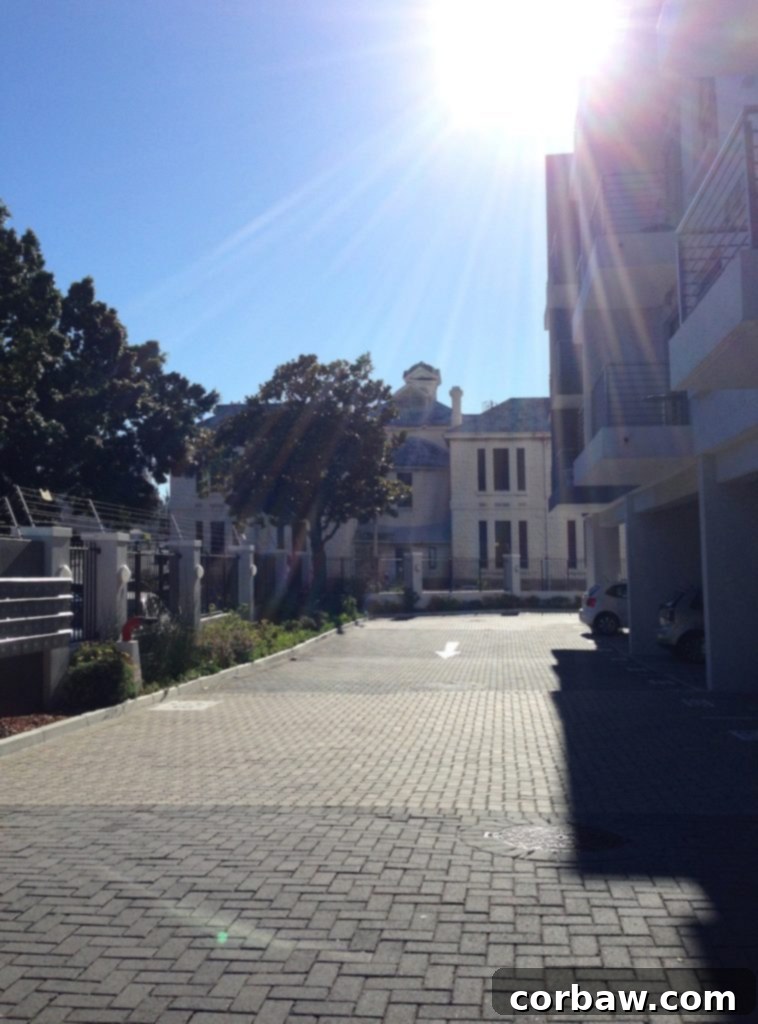
As I step out into the little parking lot just outside our complex, my eyes are often drawn upwards to Devil’s Peak, majestically peeking through the canopy of trees lining the streets. It’s a constant, reassuring presence, a reminder of the incredible natural beauty that surrounds us.

Navigating the streets here requires a certain local flair. I’ve learned to “jaywalk” across the street as safely as possible, a common practice for pedestrians. On my way, I invariably pass a charming little flower stall, brimming with fresh blooms, and the ubiquitous “5 Rand store,” where everything is priced at roughly 50 US cents – a testament to local affordability and entrepreneurial spirit.
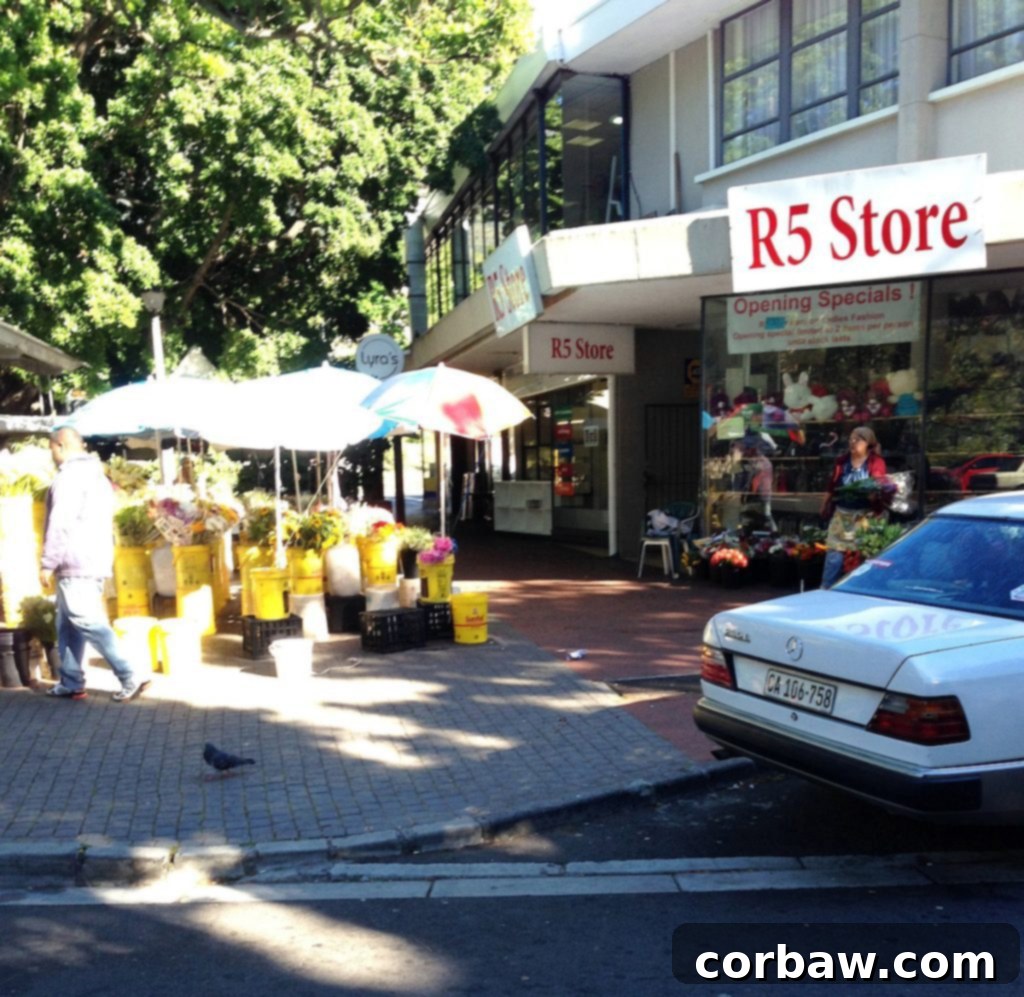
Then it’s up to my gym, a place I genuinely enjoy. Beyond the workout itself, one of the greatest perks is the absolutely incredible views I get to savor from the treadmill. Sweeping vistas of the surrounding landscape make every run feel less like exercise and more like an immersive experience.

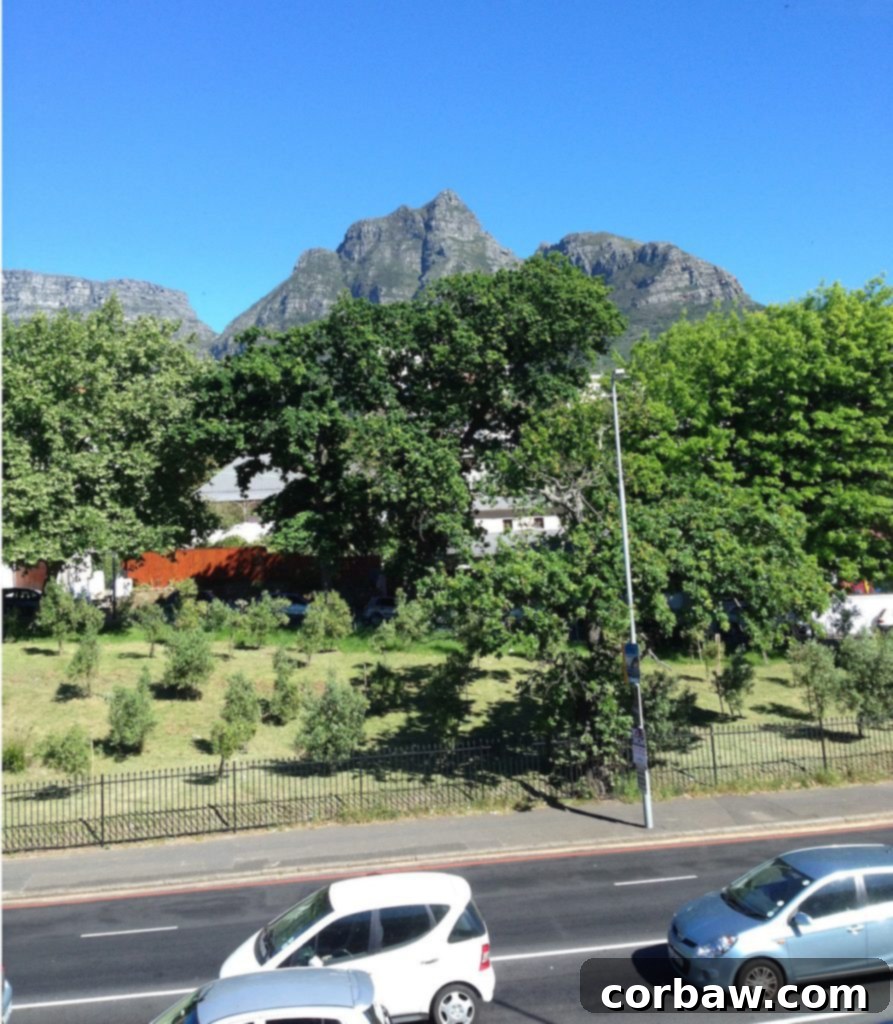
Local Flavors and Friendly Gatherings at Lyra’s
Beyond our morning routines, we’ve discovered and grown fond of a delightful local restaurant named Lyra’s. It boasts a fantastic outdoor seating area, perfectly equipped with two televisions, making it our go-to spot for catching exhilarating rugby and cricket matches. These sporting events are deeply embedded in South African culture, and Lyra’s provides a wonderfully communal atmosphere to enjoy them. On our last visit, for instance, we eagerly participated in a R5 pool to predict the final score of a rugby match, and much to my surprise and delight, I walked away with the winnings! It turns out I have a hidden talent for rugby predictions, or perhaps just beginner’s luck.

Navigating Cape Town: A Unique Transportation Experience
One aspect of daily life in Cape Town that presented a significant adjustment for me was the public transportation system, which is, frankly, somewhat underdeveloped compared to what I was accustomed to. Coming from Oregon, a state celebrated for its bike-friendly infrastructure, pedestrian accessibility, and comprehensive public transit, adapting to a city heavily reliant on cars was quite a shift. While there is a substantial number of people who walk, their method of weaving between cars in the middle of the street was initially incredibly stress-inducing. Over time, I’ve learned to adopt a safer version of this practice myself, though perhaps not with the same daring flair as some local residents. Bicyclists are an occasional sight, but dedicated bike lanes are virtually non-existent, highlighting the car-centric nature of the city’s design.
While efforts are being made to improve and expand the train and bus systems, they still have a considerable journey ahead. Given that many people commute daily from the townships on the city’s periphery into Cape Town and its various suburbs, a unique mini-bus taxi system has organically emerged to fill this critical transportation gap. These are not your traditional metered cabs; rather, they are distinct entities. Traditional taxis do exist and are an adventure in themselves, often offering unique experiences with each ride.
The Thrills and Challenges of Mini-Bus Taxis
As a hyper-rules-conscious and polite driver from Oregon, the driving style of these mini-bus taxis can, at times, drive me absolutely nuts. Yet, it’s important to acknowledge their immense value. They provide an affordable means of transport for multiple passengers simultaneously and represent a vital small business opportunity for their drivers. But for me, adapting to the driving culture in South Africa has been one of the most stressful experiences. Drivers here often treat traffic laws more as flexible guidelines than strict rules, frequently employing risky maneuvers to shorten travel times – a stark contrast to the driving habits I was used to. Mini-bus taxis, in particular, operate by their own unique set of conventions.
A common sight, and sound, is people constantly shouting the taxi’s destination out the window, ostensibly for the benefit of potential passengers walking along the sidewalk who might require a ride. In our Rondebosch neighborhood, the incessant cries of “WYNBERG!” coupled with whistles and honking, contribute to a pervasive sense of vibrant chaos on South African roads. Sharing the road with these mini-bus taxis is an even greater challenge. They frequently halt abruptly in the middle of traffic with minimal warning to pick up or drop off passengers, change lanes or swerve into adjacent lanes with a daring recklessness, execute sudden U-turns, and often disregard traffic lights (known as “robots” here, which is an awesome term). My instinct for safe, predictable driving simply cannot reconcile with this style, which is precisely why my fiancé handles most of the driving, while I often find myself wide-eyed, clutching the door handle, and pressing an imaginary brake pedal!
Affordable Cabs and Essential Rental Cars
Despite the challenges, we do occasionally use traditional cabs to compensate for the limitations of public transportation and to explore the city extensively. The affordability of these services is remarkable. A taxi ride to the airport, which is situated quite a distance outside the city center, typically costs around R170, equivalent to about $15 USD. To put this in perspective, a cab ride of a similar distance from our apartment in Portland to its airport would easily cost at least $35. This affordability is a huge advantage, especially considering South Africa is celebrated for its excellent wines. Knowing we can indulge responsibly and safely take a cab to and from vineyards or evening events is a significant convenience.
However, for most of our longer excursions and daily needs, we rely on a rental car. I cannot stress enough how highly I recommend renting a car if you plan to visit South Africa. Cities like Cape Town and Johannesburg are incredibly sprawling, and driving is, without a doubt, the most effective way to truly experience all that these dynamic urban centers have to offer. We utilize a long-term rental company that provides excellent deals for students, and while the rates are very affordable, the cars themselves are… special. They are typically older model Mercedes vehicles. While they reliably get us from point A to point B, they often struggle with minor challenges like inclines and maintaining idle at traffic lights (or “robots,” as they are charmingly called here). This venerable vehicle, seen below, is our current trusty steed:
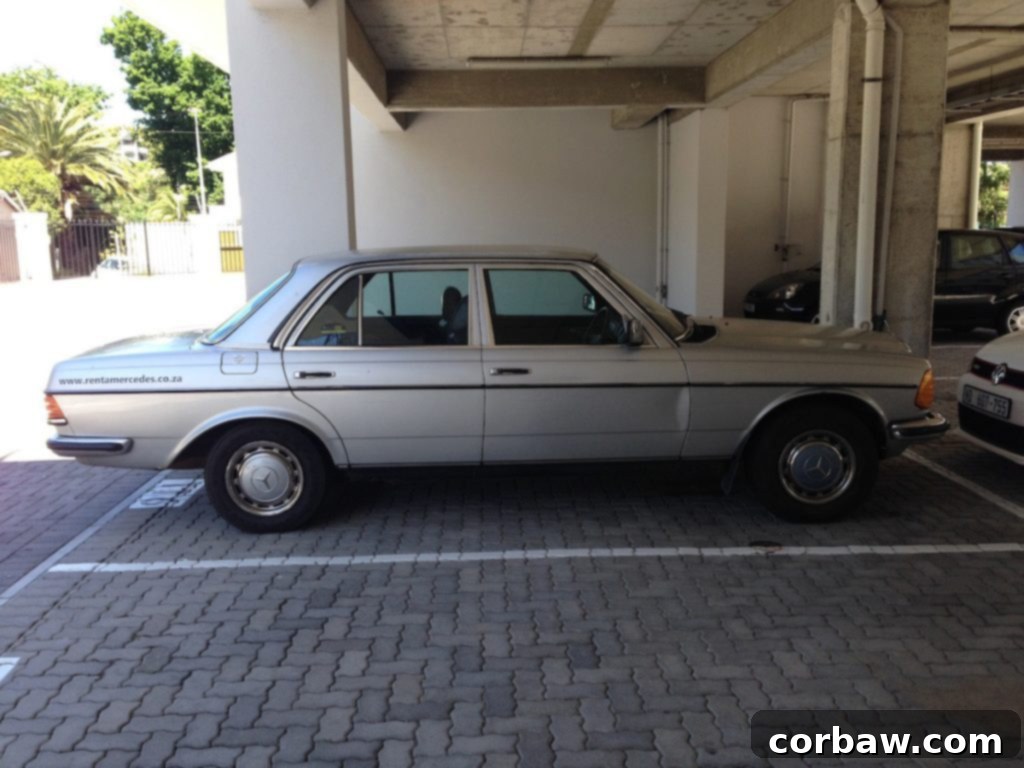
Rondebosch: A Highly Recommended Home in Cape Town
In summation, I absolutely adore our neighborhood of Rondebosch and am incredibly grateful for our decision to make it our home. For any prospective students considering enrolling at UCT, I wholeheartedly recommend this area. Its numerous benefits include easily accessible grocery stores, direct proximity to major highways for effortless travel throughout the city and beyond, and the invaluable convenience of being able to walk directly to campus. Rondebosch offers a unique blend of practicality, community, and scenic beauty.
Beyond its everyday conveniences, Rondebosch also boasts significant landmarks and attractions. It is home to the poignant Rhodes Memorial, which I’ve previously explored in a dedicated post, and of course, the prestigious University of Cape Town itself, a central feature of the neighborhood that has also been highlighted on this blog. Thank you for indulging me in this detailed exploration of the many facets that make Rondebosch such a cherished and intriguing place to live.
